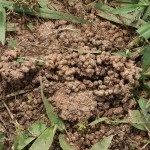
Have you ever wanted to use organic fertilizer for flowers and the other plants in your garden, but were unwilling or unable to afford it? Maybe you wanted to secure the biggest catch of the day without paying for bait or tediously digging for worms? Or have you ever found yourself in a survival situation, depleted of energy and in desperate need of sustenance? If so, then the following video can be helpful to you.
This video will explain a very simple and highly effective worm-harvesting technique known as “worm grunting”. “Worm grunting” is an invaluable tool for both preppers and non preppers alike, and in a survival situation it could been proven to be very useful. You will be shown how to use this technique to effortlessly remove earthworms from the ground, and successfully capture worms without expending much energy or spending any money. In a crisis situation, instead of aimlessly searching for food and depleting your body’s much-needed energy reserves, this simple technique could help you to easily acquire the worms.

“Worm grunting” generally refers to the use of a “stob”or wooden stake which is driven into the ground, and a “rooping iron” or metal stick which is used to rub the stob and produce the vibrations which causes the earthworms to immediately surface. It’s believed this works so well because the grunting sound and vibrations this activity produces are very similar to those created by burrowing moles, which are known to prey on earthworms. When looking for spots where you could get the most worms be sure to look for areas with moist, rich soil and look out for worm poop (castings) which look almost like coffee grounds. Of note, worm casts (poop) contain 40% more fertilization than the top of soil in which the worm lives.
Simple and effective, “Worm grunting” is an activity which costs nothing, takes very little effort to perform and will provide worms which can be used for bait, food, etc. To get started all you’ll need is a wooden stake, a rooping iron and a container to store the worms in(a wooden stake with notches carved in it can be used in place of a rooping iron). Once captured place your worms in a container filled with moist soil and bits of crumpled and dead, wet leaves, which is mainly what they eat. it’s essential that the soil be moist as the moistness of the soil protects their skin-membranes from drying out and killing them (anything that can damage their skin membranes can suffocate them to death). It’s also important to let your worms burrow themselves in the soil vs. you throwing dirt over the top of them, as doing so can also kill them. Be sure and store your worms in a dark, cool place (not too cold though or they’ll die), and don’t forget to poke holes in the lid of the container that you’re using, big enough to allow oxygen flow, but small enough to keep the worms from escaping.
To learn more about getting worms out of the ground without digging, check out this video!